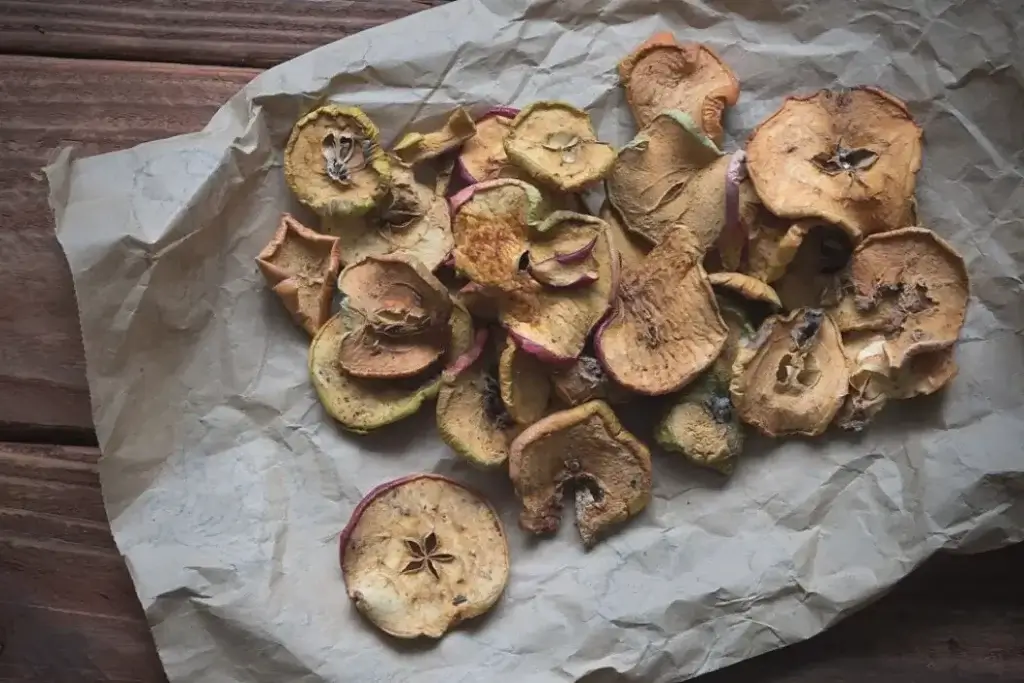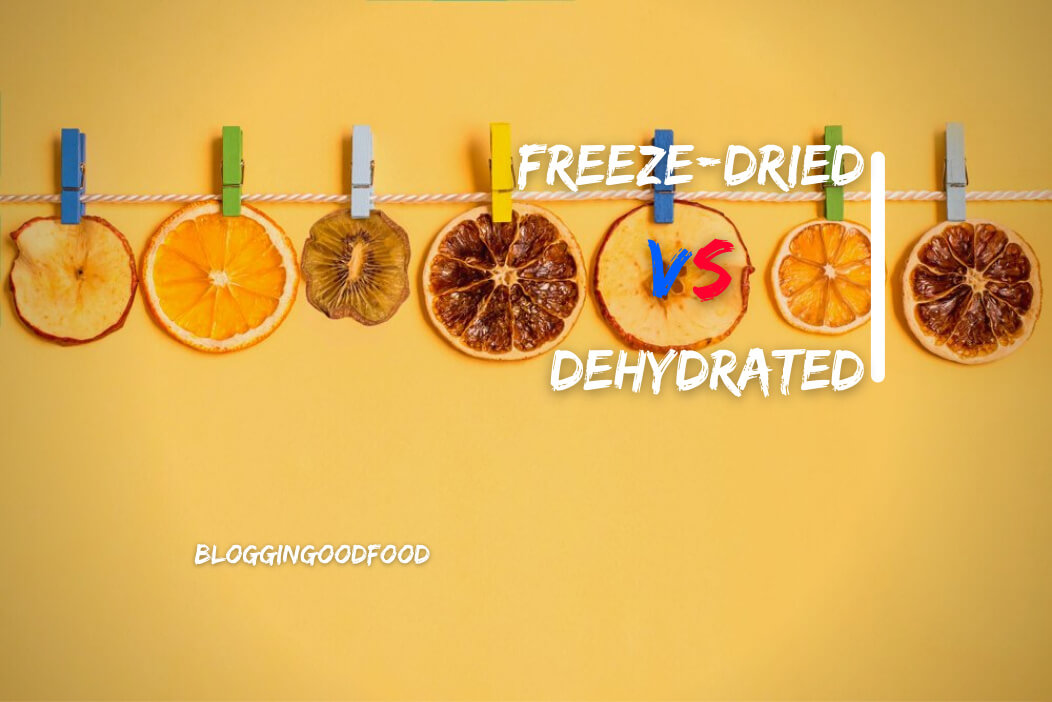Unless you’ve been following the freeze-dried food trend for a while, you might not be aware of the distinction between freeze-dried and dehydrated foods. Freeze-dried food may appear to be identical to standard dehydrated (or just dry) snacks on the surface, there are some important differences between the two, including differences in texture and flavor, among other things.
Freeze dryers and dehydrators are devices that evaporate water from foods in preparation for storage. Dehydrators utilize low heat to extract around 80 percent of the water. In contrast, freeze dryers swing between cold, heat, and a vacuum to remove approximately 95 percent of the water from the food. Foods with a reduced water content keep their freshness and shelf life longer.
When it comes to food preservation, there are several options available, but the two most prevalent are freeze-drying and Dehydration. Both methods have advantages and disadvantages, and which is the ideal way for you will depend on your requirements. The following compares the advantages and disadvantages of freeze-drying versus dehydrating food.
Table of Contents
The History of Dried Foods:
Moisture must be eliminated from the food before any long-term food preservation attempts. Ancient cultures realized this and devised the first technologies for drying foods, which are still today.
Dehydrating has been practiced since 12,000 B.C., according to historical records. The Romans and other cultures of the Middle East used dry fruits and vegetables in “still houses,” utilizing fire to dry and smoke the items while they were being prepared.
On the other hand, the freeze-drying procedure is a comparatively recent development. It was initially successfully utilized during World War II to preserve blood plasma, medication, and food for the troops.
Dehydration Versus Freeze-Drying: What’s the Difference Between the Two?
Freeze-Drying:

The freeze-drying process is a relative newcomer compared to the centuries-old procedures of fundamental Dehydration: it has been around since the 1900s and didn’t make it onto the world arena until World War II.
Because it submits foods to freezing and a water vacuum, the procedure is more technologically complex than conventional Dehydration, requiring more sophisticated equipment.
As seen by the employment of freeze-dried plasma proteins and penicillin for hospital care in the field, technology revealed its enormous potential throughout the conflict.
Dehydration:

Dehydration is an extremely old way of preserving food: humans have been drying food in the sunlight for centuries to make it more shelf-stable, stackable, and packable for millennia.
Food is dehydrated when it has been stripped of as much water as possible, allowing it to last for a longer time before succumbing to microbial decomposition and other forms of degradation.
What Are These Foods That Make Them Ideal for the Great Outdoors?
When it comes to outdoor enthusiasts, the attractiveness of these methods is evident: you get to transport supplies and prepare meals out into the wilderness without having to hurt your back or carry a full pack string. You get to experience more diversified flavors when you’re not near a refrigerator.
The following are the advantages and differences of moisture removal:
Put, Dehydration, and freeze-drying are methods of food storage that entail eliminating water from food and making it more shelf-stable.
Freeze-drying and Dehydration help make food lighter and more compact, allowing for greater use of storage and transportation resources.
Traditional dried food typically has between 80 and 95 percent of its moisture evaporated, depending on the precise procedure used and other conditions such as temperature and humidity. In comparison, freeze-dried food eliminates around 98-99 percent of the moisture from the product.
The Distinction in Dehydrate and Dried-Freeze:

The difference between freeze drying and dehydrating is that one eliminates water through sublimation or freezing it out, while the other does not remove any water.
The alternative method eliminates water from the meal by evaporation, which necessitates the application of heat to the food. It is not only about how long something takes to dry; it is also about eliminating moisture from meals that is important. Here are some of the most significant distinctions:
The Nutritional Value of the Food:
Compared to other food preservation techniques, dehydrating food is far healthier. In addition to preventing the food from rotting, it will aid in the preservation of the majority of the minerals and vitamins included inside it.
However, one of the key distinctions between freeze-drying and dehydrating food is the number of vitamins and minerals that remain once the process is completed.
By research findings, freeze-drying can maintain up to 97 percent of the minerals and vitamins present in fresh food. When it comes to Dehydration, however, this number might differ.
Many dehydrators, such as those made by Nesco, claim to retain up to 97 percent of its minerals and vitamins because of their Opaque Vita-Save technology, which blocks out light.
It should be noted that this is not true of all-electric dehydrators, nor is it true of solar dehydrators, which are capable of preserving 95 percent of the enzymes in fresh produce.
The Shelf Life of a Product:

Both freeze-drying and dehydrating goods will help you preserve and store them for an extended time. The question is, how long do you consider to be sufficient? T
The dry foods you make using a normal home dehydrator will last for one to two years after they’ve been desiccated; the actual length of time will depend on the storage circumstances. When food is frozen and dried, it retains its nutritional value for 25 years.
Preparation:
A home food dehydrator is tiny and powerful, and it is simple to use. The procedure of dehydrating food is rather simple; all that is required is the placement of the prepared vegetables, fruits, or meat on the plate and the setting of the temperature.
Even if your electronic device has an on-screen clock, adding one more step to this two-step method isn’t so horrible after all.
However, when it comes to freeze-drying, situations are not quite that straightforward. It will take some time to get proficient at freeze-drying food. Because it is not as basic as dehydrating, there will be a little learning experience, but you will not find a difference in the results when you feel it.
Costs:
The most immediately noticeable distinction between freeze-drying and dehydrating food is the initial investment expense.
While freeze-drying may have a longer shelf life and provide amazing effects, it will also come at a high financial cost. Freeze driers are often quite expensive, costing thousands of dollars.
That is not a decision to be made carelessly, nor is it a purchase to be made on the spur of the moment to try and experiment.
On the other hand, food dehydrators are dependable, simple to use, and provide consistently excellent results; but, they are not prohibitively expensive, so you won’t have to empty your debit card to get one. There are numerous excellent food dehydrators available on the market for less than $100!
Yes, there are more costly versions available, but they are far less expensive in comparison. Purchasing a food dehydrator can provide you with greater peace of mind if you are a novice just starting started in the realm of food storage.
Even if things aren’t working out for you (which is very improbable because drying food is not only fun, but the final results are magnificent), you will not suffer a significant financial setback.
Freeze Dried Vs Dehydrated Foods:

Long-term shelf life and a crisp, airy quality are the consequence of removing all moisture from the completed product. As a result of the moisture retention, the product has a shorter shelf life and is softer and chewier.
Foods keep a similar look to when they were first prepared. Foods become dried out and lose their natural look.
Before drying, the product flash freezes to preserve the nutrients. It is possible that the flavor will alter and will not be authentic to the original flavor.
In the majority of cases, the flavor remains authentic to the original. It is not possible to rehydrate to its original condition.
It can be rehydrated to a condition near or identical to the original state. Heat is used to dry, which reduces the nutritious value of the product.
You can freeze-dry about everything (apart from foods with a high-fat content – including butter – or a high sugar content – including honey), and it will keep for a very long time. There are several restrictions on the sorts of food that may be dehydrated.
What Are the Advantages and Disadvantages of Freeze-Dried and Dehydrated Foods?
Both dehydrated foods and freeze-dried foods have their pros and cons discussed here. It is your requirements and how you want to use the important meals.
To prepare a nutritious long-term meal that will keep for a long time, you may wish to learn how to freeze dry food first.
This is because freeze-dried foodstuff is more nutritious and has a longer shelf life than fresh food. If you need to keep food for an extended period, freeze-dried food is one option to consider.
Pros of Freeze-Dried Foods:
⦁ Food that has been dried is more lightweight and portable.
⦁ Food may be transported in large quantities at a lower cost.
⦁ As previously said, freeze-dried food preserves most of its original flavor, nutritional value, size, and form.
⦁ With no refrigeration, it may keep for several months, and in some cases, years.
⦁ To consume something quickly, all you’ll need to do is rehydrate the meal and consume it immediately, rather than cooking it as is the case with dried goods.
Cons of Dehydrated Foods:
⦁ Freeze-dried food may be rather expensive.
⦁ This is because the process requires specialized equipment to be carried out.
⦁ Furthermore, freeze-dried foods take up the same storage space as fresh goods.
⦁ Freeze-dried meals are expensive, they are useful as items that can be stored for a long period and are simple to prepare.
Pros of Dehydrated Foods:
⦁ It has a delicious flavor.
⦁ They are less expensive.
⦁ They’re made of natural materials.
⦁ Reduces the amount of waste produced
Cons of Dehydrated Foods:
⦁ It may contain a lot of calories.
⦁ It may have high sugar levels.
Final Words:
It’s difficult to select a clear winner in this food preservation battle because both approaches have advantages. If you’re searching for a user-friendly technique for beginners, economical, and suited for everyday usage, the dehydrator will be the best option for you.
The purchase of a freeze drier is undoubtedly worthwhile if money is not a problem, you are willing to accept the real challenge that comes with this technique, and you require multipurpose equipment that will allow you to preserve food fresh for decades.

